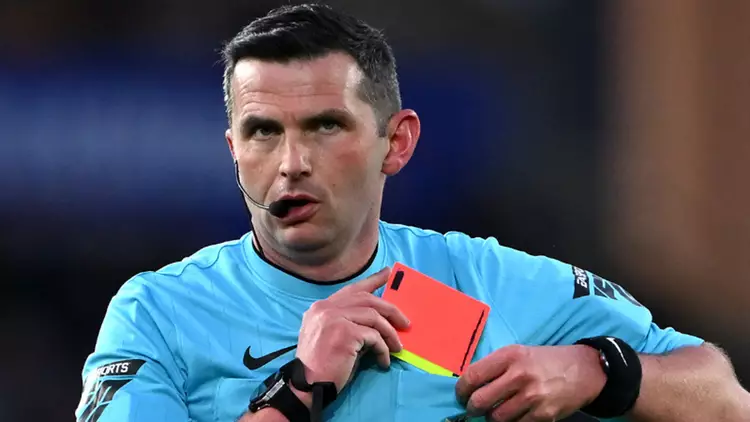VAR Under Fire: Expert Analysis of James Trafford’s Escape from Red Card in Manchester City’s Defeat

Saturday, August 23rd, 2025, will be remembered as a day when Video Assistant Referee technology once again found itself at the center of heated debate. The Etihad Stadium witnessed what many are calling one of the most controversial non-decisions of the season, as Manchester City’s new goalkeeper James Trafford appeared to escape punishment for what seemed like a clear red card offense during Tottenham’s impressive 2-0 victory.
The incident, which occurred in the 39th minute of the match, has sparked intense discussion among football officials, analysts, and fans alike. Former PGMOL chief and ex-FIFA official Keith Hackett has been particularly vocal in his criticism, expressing shock at VAR’s failure to intervene in what he describes as a “clear” red card situation that denied Tottenham an obvious goalscoring opportunity.
The Incident: A Frame-by-Frame Analysis
The controversy unfolded just four minutes after Brennan Johnson had given Tottenham the lead with a well-taken opener. Manchester City, already under pressure at their home ground, found themselves facing another dangerous attack as Tottenham’s Mohammed Kudus broke through the defensive line with pace and purpose.
As Kudus advanced toward the City goal, James Trafford, the 22-year-old goalkeeper who had been brought in to provide competition for the number one spot, made a split-second decision that would become the talking point of the match. The young shot-stopper charged out of his penalty area, ostensibly attempting to clear the danger before Kudus could capitalize on his advantageous position.
However, what followed was a collision that many observers believe should have resulted in immediate dismissal. Trafford not only made contact with Kudus, taking the Tottenham forward down outside the penalty area, but also appeared to handle the ball while outside his designated area. The dual nature of the offense – both the denial of an obvious goalscoring opportunity and the handball outside the penalty area – should, according to the Laws of the Game, have warranted a straight red card.
The immediate aftermath of the incident saw relatively muted protests from the Tottenham players, perhaps surprised by the lack of immediate action from referee and VAR alike. Meanwhile, Manchester City players and management seemed equally bewildered by the lack of punishment, though undoubtedly relieved that their goalkeeper remained on the pitch.
Keith Hackett’s Expert Verdict
Keith Hackett, whose credentials in football officiating are impeccable, having served as both PGMOL chief and a FIFA official, was unequivocal in his assessment of the incident. Speaking exclusively to Football Insider, Hackett expressed his shock at VAR’s inaction, describing the decision as one that raised serious questions about the consistency and application of video technology in modern football.
“This was a clear red card situation,” Hackett stated emphatically. “When you analyze the incident, Trafford has denied an obvious goalscoring opportunity. The laws are quite clear on this matter – when a goalkeeper comes out of his area and takes down an opponent who is through on goal, with no other defenders in a position to prevent the scoring opportunity, it’s a straight red card.”
Hackett’s analysis extends beyond the obvious denial of a goalscoring opportunity. He also highlighted the handball aspect of the incident, noting that goalkeepers are not permitted to handle the ball outside their penalty area, regardless of the circumstances. “The double jeopardy here makes it even more clear-cut,” he explained. “Not only has Trafford denied the goalscoring opportunity through the foul, but he’s also handled the ball outside his area. Either offense alone would warrant a red card, so having both elements present makes VAR’s inaction even more baffling.”
The former FIFA official’s criticism extends to the Video Assistant Referee system itself, which was introduced to eliminate clear and obvious errors by match officials. “This is exactly the type of incident that VAR was designed to catch,” Hackett continued. “When we have technology available to review these decisions, and we still get them wrong, it raises serious questions about the training and protocols surrounding VAR usage.”
The Broader Context: Trafford’s Challenging Start
This incident represents another chapter in what has been a difficult beginning to James Trafford’s Manchester City career. The young goalkeeper, who joined the club with high expectations, has already shown signs of the pressure that comes with playing for one of the world’s elite football clubs.
The mistake that followed the controversial non-red card incident only compounded Trafford’s woes. After surviving what should have been a dismissal, the goalkeeper then proceeded to make an error that would prove costly for his team. His poor pass out from the back fell directly to Tottenham’s Pape Sarr, who quickly seized upon the opportunity to regain possession in a dangerous area.
Sarr’s alert play set up Joao Palhinha, who made no mistake from close range, burying his shot to double Tottenham’s lead and effectively seal the victory. The irony was not lost on observers that Trafford’s escape from a red card was immediately followed by an error that led directly to a goal.
This sequence of events highlights the pressure and scrutiny that modern goalkeepers face, particularly when playing for clubs with championship aspirations. Every decision, every touch, and every moment of hesitation is magnified under the intense spotlight of elite football.
Fan Reaction and Social Media Storm
The controversial incident quickly became a trending topic on social media platforms, with Manchester City fans expressing their frustration not only with the VAR decision but also with Trafford’s overall performance. Many supporters took to Twitter and other platforms to voice their concerns about the goalkeeper’s suitability for the demands of playing at the Etihad Stadium.
The hashtag #TraffordOut began trending among City fans, with many calling for the club to accelerate their pursuit of more experienced goalkeeper options. Some fans pointed to the ongoing speculation linking PSG’s Gianluigi Donnarumma with a move to Manchester, suggesting that the Italian international would provide the reliability and experience that Trafford currently lacks.
“After today’s performance, we need to bring in Donnarumma more than ever,” wrote one frustrated City supporter. “Trafford isn’t ready for this level, and incidents like this prove it. We can’t afford to drop points because of goalkeeping errors.”
The reaction from Tottenham fans was markedly different, with many expressing frustration at the VAR decision while simultaneously celebrating their team’s impressive victory at one of the Premier League’s most challenging venues. Many Spurs supporters felt that their team had been denied a clear advantage through the controversial non-decision but were ultimately pleased with the outcome.
The VAR Debate: Technology Under Scrutiny
This incident has reignited the ongoing debate about the effectiveness and implementation of VAR technology in football. Since its introduction, VAR has been both praised for correcting clear errors and criticized for creating confusion and inconsistency in decision-making.
The Trafford incident represents a particularly frustrating example for VAR critics, as it appears to be exactly the type of clear and obvious error that the system was designed to address. The fact that multiple angles and slow-motion replays were available, yet no action was taken, has led to questions about the training and decision-making processes of VAR officials.
Football analysts and commentators have pointed out that similar incidents in other matches have resulted in red cards, highlighting the inconsistency that continues to plague VAR implementation. This inconsistency not only affects the immediate outcome of matches but also undermines confidence in the officiating system as a whole.
The Professional Game Match Officials Limited (PGMOL) has yet to provide a detailed explanation for the decision not to intervene in the Trafford incident, though they are likely to face pressure to clarify their position in the coming days.
Tactical Impact and Match Dynamics
The decision to allow Trafford to remain on the pitch had significant tactical implications for both teams. Had the goalkeeper been sent off as many expected, Manchester City would have been forced to make a substitution, bringing on their backup goalkeeper and potentially removing an outfield player from the game.
This change in personnel could have dramatically altered the course of the match, particularly given that City were already trailing 1-0 at the time of the incident. Playing with ten men for more than half the match would have made their task of finding an equalizer significantly more challenging.
From Tottenham’s perspective, the failure to receive what many viewed as a justified red card represented a missed opportunity to press home their advantage. Playing against ten men, particularly with the opposition goalkeeper dismissed, would have provided Spurs with a significant psychological and tactical advantage.
The fact that Tottenham still managed to secure a comprehensive 2-0 victory despite this setback speaks to the quality of their performance and their ability to capitalize on the opportunities that did present themselves.
Historical Precedent and Comparative Analysis
To understand the significance of this incident, it’s worth examining similar situations from recent football history. There have been numerous cases where goalkeepers have been dismissed for similar offenses, both for denying obvious goalscoring opportunities and for handling the ball outside their penalty area.
One notable comparison can be made with a similar incident involving Liverpool’s Alisson Becker in a Champions League match, where the Brazilian goalkeeper was shown a red card for a comparable offense. The consistency of such decisions has always been a challenge in football officiating, but the introduction of VAR was supposed to minimize these discrepancies.
The fact that Trafford escaped punishment for what appears to be a similar offense raises questions about the criteria being used by VAR officials and whether there is sufficient consistency in their application of the Laws of the Game.
Implications for Manchester City’s Season
This incident and Trafford’s overall performance could have broader implications for Manchester City’s season and their transfer strategy. The club’s pursuit of goalkeeping reinforcements has been well-documented, with several high-profile targets being linked with moves to the Etihad Stadium.
The pressure on Trafford following this performance is likely to intensify, potentially affecting his confidence and long-term development. For a young goalkeeper, the scrutiny and criticism that follows such incidents can be particularly challenging to manage.
Manchester City’s coaching staff will need to carefully manage Trafford’s development while also considering whether additional goalkeeping options are necessary to maintain their competitive edge throughout the season.
The Role of Technology in Modern Football
The Trafford incident serves as a case study in the ongoing evolution of technology in football. While VAR has undoubtedly corrected many clear errors since its introduction, incidents like this highlight the system’s limitations and the continued importance of human judgment in officiating.
The debate surrounding VAR implementation continues to evolve, with calls for greater transparency in decision-making processes and more consistent application of the technology. The football community remains divided on whether VAR has improved the game or created additional sources of controversy.
Conclusion: Questions That Demand Answers
The James Trafford incident during Manchester City’s defeat to Tottenham represents more than just a controversial refereeing decision – it highlights fundamental questions about the implementation and effectiveness of VAR technology in modern football. Keith Hackett’s expert analysis, supported by his extensive experience in football officiating, provides a clear indication that this was a significant error that should have been corrected by the video assistant referee system.
The implications of this incident extend far beyond the immediate match result. For James Trafford, it represents both a fortunate escape and a missed opportunity to learn from what should have been a costly mistake. For Manchester City, it raises questions about their goalkeeping options and transfer strategy. For the broader football community, it reignites debates about the consistency and reliability of VAR technology.
As the season progresses, incidents like this will continue to shape discussions about officiating standards, technology implementation, and the future direction of football governance. The hope is that lessons will be learned from such controversies, leading to improved consistency and greater confidence in the systems designed to ensure fair play.
The football world will be watching closely to see how both Trafford and the VAR system respond to this controversy, as both face scrutiny and pressure to improve their performance in future matches. Only time will tell whether this incident becomes a footnote in the season or a catalyst for more significant changes in how technology is used to officiate the beautiful game.














